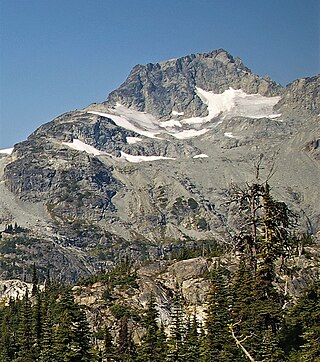
Face Mountain is a 2,485-metre (8,153-foot) mountain summit located in British Columbia, Canada.
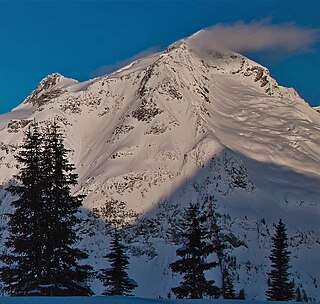
Mount Butters is a 3,141-metre (10,305-foot) mountain summit in British Columbia, Canada.
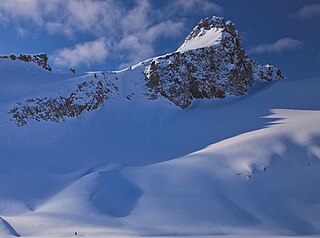
Omoo Peak is a 2,674-metre (8,773-foot) mountain summit in British Columbia, Canada.

Mount Proteus is a 3,198-metre (10,492-foot) mountain summit in British Columbia, Canada.

Typee Mountain is a 2,897-metre (9,505-foot) summit in British Columbia, Canada.
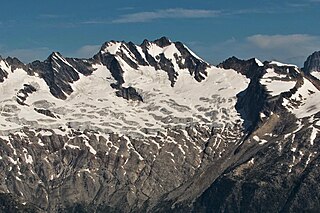
Moby Dick Mountain is a 3,154-metre (10,348-foot) summit in British Columbia, Canada.
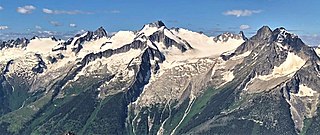
Nautilus Mountain is a 3,130-metre (10,270-foot) summit in British Columbia, Canada.
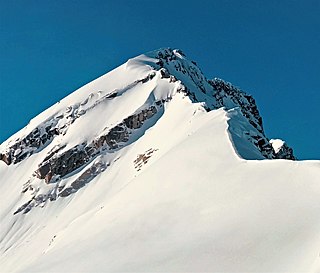
Outrigger Peak is a 2,850-metre (9,350-foot) mountain summit in British Columbia, Canada.
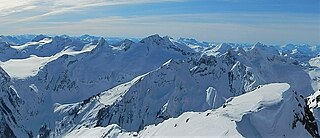
Scylla Mountain is a 2,920-metre (9,580-foot) summit in British Columbia, Canada.

Wrong Peak is a 2,869-metre (9,413-foot) summit in British Columbia, Canada.

Northpost Spire is a 2,911-metre (9,551-foot) peak in British Columbia, Canada.

Wallace Peak is a 2,940-metre (9,650-foot) summit in British Columbia, Canada.

Mount Nemo is a 2,901-metre (9,518-foot) summit in British Columbia, Canada.

Mount English is a 2,680-metre (8,793-foot) mountain summit located in the Gold Range of the Monashee Mountains of British Columbia, Canada. Situated 17 km (11 mi) southwest of Revelstoke, this peak is visible from the Trans-Canada Highway and Revelstoke Mountain Resort ski slopes. Neighbors include Mount Macpherson 8 km (5.0 mi) to the northeast, Mount Tilley 5 km (3.1 mi) to the east, and Mount Begbie is 8 km (5.0 mi) to the east. Precipitation runoff from Mount English drains into tributaries of the Eagle River. Topographic relief is significant as the summit rises 1,540 meters (5,052 ft) above Wap Creek in 3 km (1.9 mi).

Catamount Peak is a 2,733-metre (8,967-foot) mountain located in Glacier National Park in British Columbia, Canada. Catamount Peak is part of the Hermit Range of the Selkirk Mountains and is 7 km (4.3 mi) west of Rogers Pass. It is approximately midway between Revelstoke and Golden. Neighbors include Cheops Mountain, 5.05 km (3.14 mi) to the east, and Ursus Major Mountain, 1.83 km (1.14 mi) to the northeast. Precipitation runoff from the mountain's south slope drains to Illecillewaet River via Cougar Brook, and the north slope drains to the Beaver River via Ursus Creek. Topographic relief is significant as the summit rises 1,230 metres (4,035 ft) above Ursus Creek in 2 km (1.2 mi) and 930 m (3,051 ft) above Cougar Brook in 1 km (0.62 mi). This peak is visible from the Trans-Canada Highway.

Kumkan Peak is a 2,742-metre (8,996-foot) mountain summit located in British Columbia, Canada.
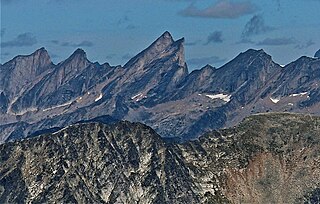
Hall Peak is a 3,048-metre (10,000-foot) mountain summit located in British Columbia, Canada.

Houdini Needles is a 2,663-metre (8,737-foot) mountain in British Columbia, Canada.
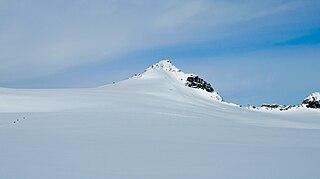
Sentinel Peak is a 2,992-metre (9,816-foot) mountain in British Columbia, Canada.

Serendipity Spire is a 2,857-metre (9,373-foot) mountain in British Columbia, Canada.

























